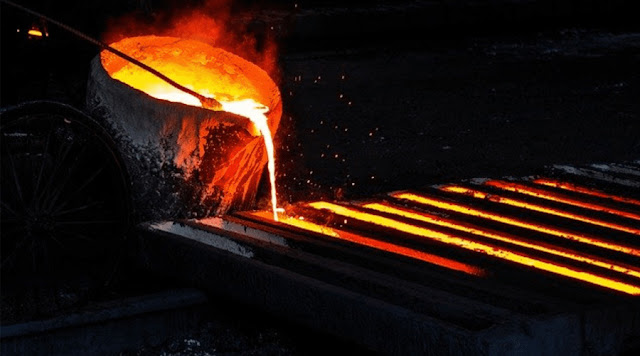Induction Melting Furnace Foundry HANI
In the field of metal casting, induction melting furnace foundry has become the leader in changing the metal casting industry. With its exceptional efficiency, precision and versatility, this advanced technology has revolutionized the way metals are melted and cast, bringing numerous benefits to the global steel mill, metal smelting industry.
Characteristics Of Induction Melting Furnace Foundry
Induction Furnace Casting Principle
IF uses the principle of electromagnetic induction to generate heat in the crucible to melt various metals, such as iron, steel, copper, aluminum, etc.
The process begins by placing the metal in a crucible, which is then heated by a high-frequency electromagnetic field generated by an induction coil. When the metal reaches its melting point, it transitions into a molten state, ready for casting.
> One of the main advantages of induction furnace casting is its excellent energy efficiency. Unlike traditional furnaces that rely on fossil fuels or electrical resistance, induction furnaces use electromagnetic fields to generate heat directly within the metal, minimizing energy waste.
This efficient heat transfer ensures faster melting times, reduced energy consumption and lower operating costs, making it an environmentally friendly and cost-effective solution.
> Precision is another hallmark of induction melting furnaces.
With precise temperature control and even heat distribution, these furnaces ensure consistent melting results, eliminating any variation in metal quality. This level of precision is critical for industries that require strict adherence to specific alloy compositions to ensure optimal material properties and performance.
Additionally, the ability to control the melting process allows parameters such as temperature, power and stirring speed to be adjusted, allowing for customization to specific casting requirements.
> The versatility of IF is another reason for their growing popularity.
These furnaces can accommodate a variety of metal types, weights and shapes, making them suitable for a variety of industries, including automotive, aerospace, construction and jewelry.
HANI's medium frequency induction furnaces are mainly used in the metal smelting industry. Additionally, induction furnaces can handle both small and large-scale production, making them adaptable to a variety of manufacturing needs.
> In any industrial environment, safety is always the most important issue, and induction melting furnace foundries also prioritize this.
The absence of open flames, reduced smoke emissions, and minimal risk of explosion or leakage make them inherently safer than traditional furnaces. In addition, the advanced design of these furnaces incorporates safety features such as automatic shut-off systems, temperature monitoring and smoke extraction to ensure a safe working environment for operators.
> Induction melting furnace foundry increase overall productivity.
Their fast melt times and reduced cycle times translate into higher productivity, allowing smelting equipment manufacturers to meet tight deadlines and fulfill customer orders more efficiently. Additionally, the simple automated control system of these furnaces minimizes human errors, further increasing productivity levels.
In summary, induction furnace foundry usher in a new era of efficiency, precision and versatility in the metal casting industry. Its energy efficiency, precise temperature control, adaptability, safety features and enhanced productivity make it an indispensable tool for modern manufacturing processes.
As the industry continues to embrace technological advancements, it will play a vital role in transforming the metal casting business and driving innovation to new heights.
If you have any questions or needs about IF, EAF, SAF, LF, LRF and other smelting furnaces, please feel free to contact our factory!
E-mail: saleswn@hanrm.com / inquiry66@hanmetallurgy.com (Daisy Zhai)
Tel / Whatsapp / Wechat: 0086 17791213533
Xi'an Hani Tech Co., Ltd.



Comments
Post a Comment